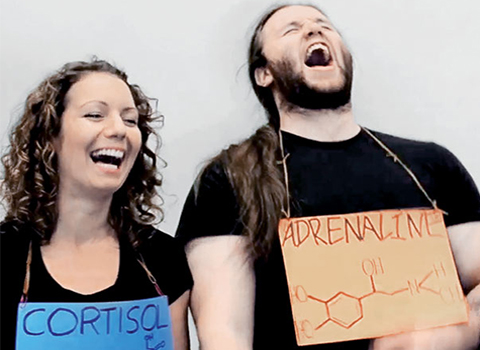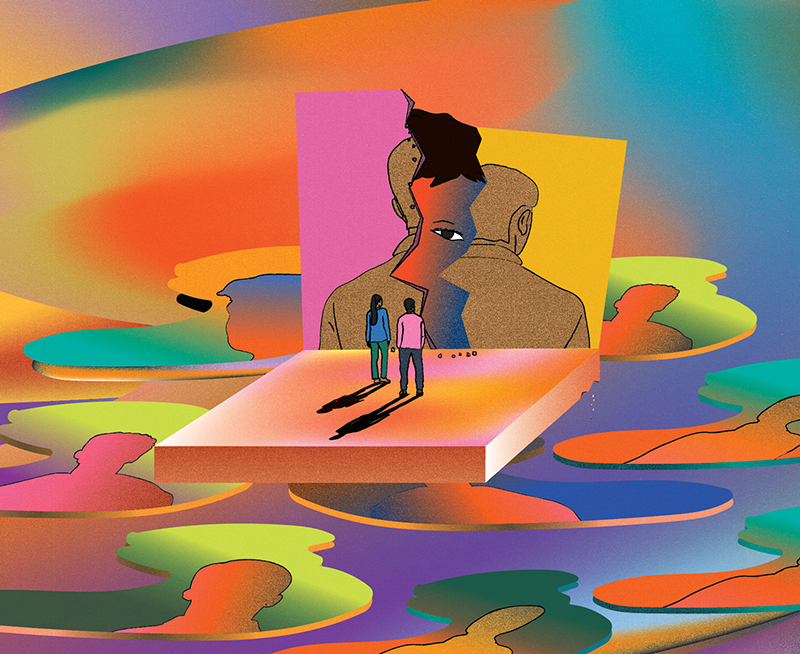A team including a PhD student and two U of T alumni have won a challenge by Scientific American to create a two-minute video explaining a body part or process in a fun and engaging way using common household objects such as string, rubber bands and paper clips.
The video is jointly narrated by PhD candidate Dorea Reeser (MSc 2009) and Raluca Ellis (PhD 2011), and also features Nigel Morton (BA 2011 VIC). The team explains the role and importance of the body’s adrenal glands, which help regulate how the body responds to stress.
In awarding the top prize, the judges uniformly praised the educational value and clarity of the video. Their comments, published at the Scientific American website, emphasize the team’s inventive use of props and humour, clear message and polished production values. “Not only did the team elegantly and creatively incorporate all of the required props into their story,” commented Chad Cohen, a science documentary producer, “they revealed the inner workings of an important body system with clarity and pizzazz.”
Winning the competition did not come with a cash award, but the judges’ encouraging comments were prize enough for Reeser. “That’s really rewarding and motivating,” she says.
Recent Posts
People Worry That AI Will Replace Workers. But It Could Make Some More Productive
These scholars say artificial intelligence could help reduce income inequality
A Sentinel for Global Health
AI is promising a better – and faster – way to monitor the world for emerging medical threats
The Age of Deception
AI is generating a disinformation arms race. The window to stop it may be closing




